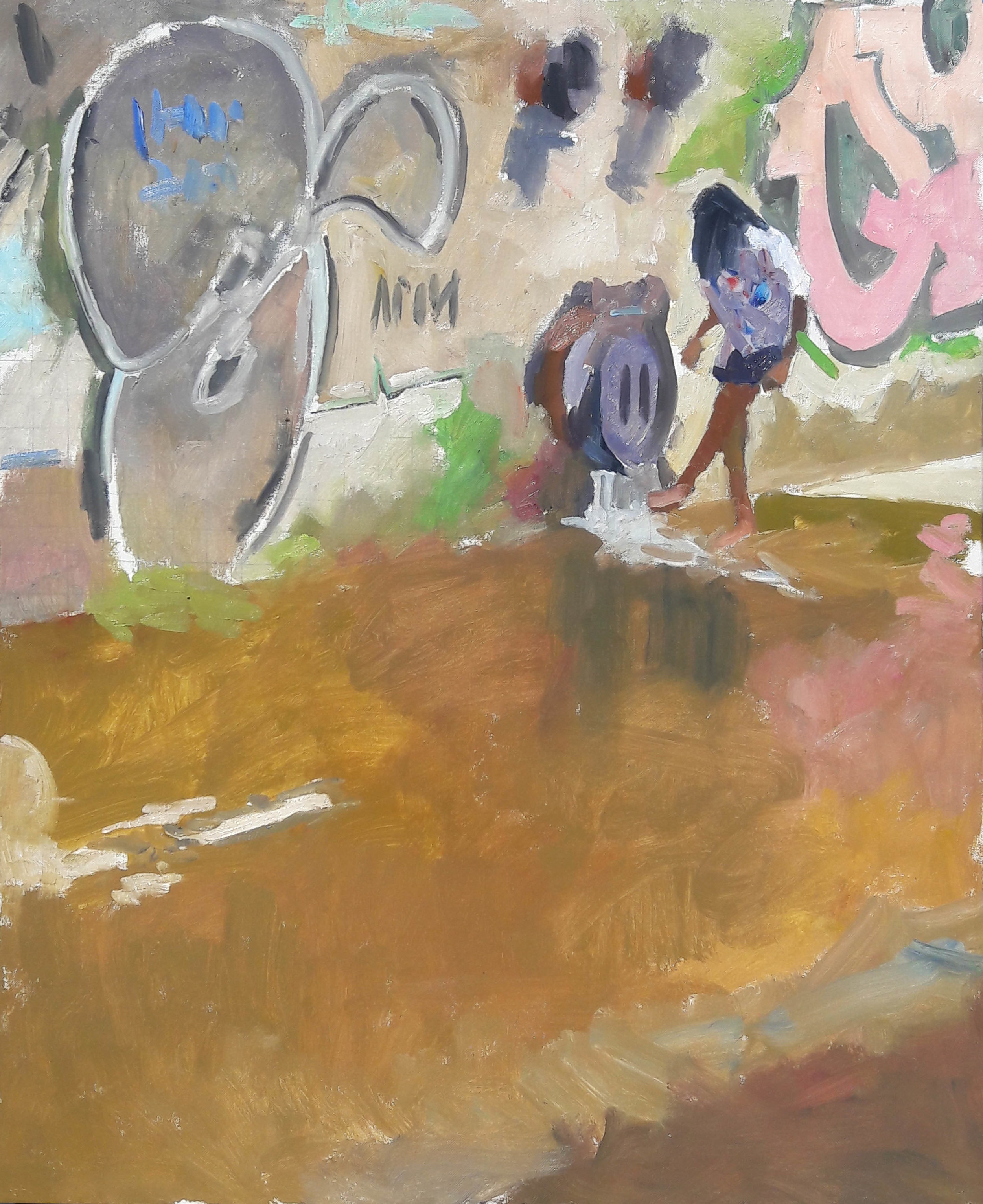The Spillway Girl Part Two
July's Spillway Girl opus was a design which underwent very little change once its main lines were transferred to the full sized canvas. Having painted the scene once as a small sketch, and having tried various other compositional schemes, I had settled on what it was I thought the picture wanted to be. Its various stages of completion were just refinements. Maybe there's a lesson in that. Abraham Lincoln said that if he were given six hours to cut down a tree, he'd spend four of them sharpening his axe. My sharpening time, chronicled in previous essays here, enabled me to work efficiently and well. And an added bonus, a model who wanted badly for the picture to succeed, was a benefit that's impossible to overstate. When I wanted to stay home and make comic books, she had a habit of calling and asking when I planned on showing up at the Spillway.
The various stages of the picture need little explanation. Here they are:
Living with the picture day after day, I began to crave certain rhythms absent in the initial pose. The above sketch was an idea which I thought would improve the picture. Having a living model, I had the option of making such changes without sacrificing the verisimilitude which one often loses when working from the imagination. The crook in her wrist, and the action of her sandal which amplified it, appeared to be an improvement.
It's not exactly a linear progression, in which nebulous forms come out of a fog into sharp focus. Rather, the sharp focus is a matter of my own realization of what I sought. Hard edges are softened, hardened, softened again. Generalized form and color are made very specific, regeneralized, and respecified. What nudges the picture forward? What can be done without? One can't keep going forever, although Degas' clients were rightfully wary of ever allowing him to borrow back pictures they'd purchased from him: likely they would never satisfy him, and they'd never be returned.
That said, after all of these sessions, I considered the picture a success, and I still do.










